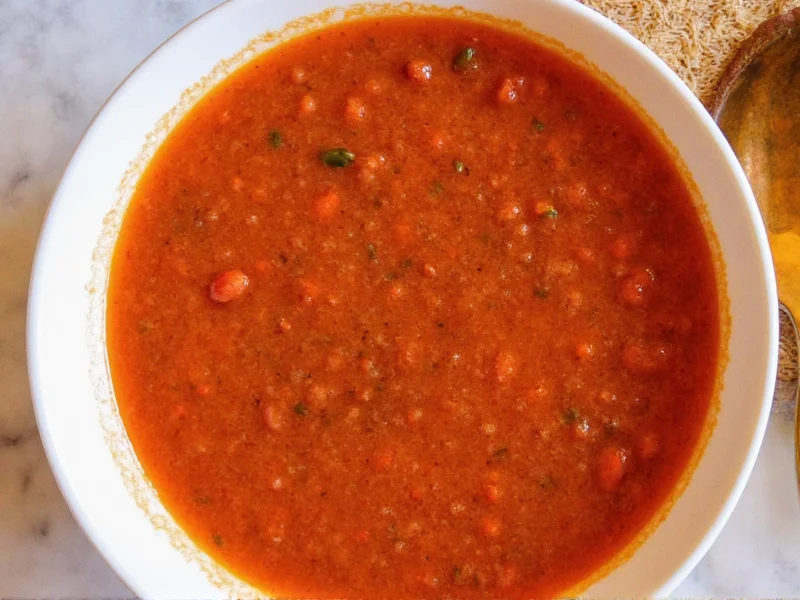Chile de arbol, known as “árbol chile” or “tree chili” in Spanish, delivers a distinctive fiery kick with subtle nutty undertones. This authentic Mexican salsa recipe transforms dried chiles de arbol into a versatile condiment that elevates everyday meals. Unlike milder salsa varieties, chile de arbol salsa offers complex heat that builds gradually, making it perfect for those seeking authentic Mexican flavors with controlled spiciness.
Understanding Chile de Arbol for Salsa Making
Before diving into the recipe, it's important to understand what makes chile de arbol special. These slender, bright red dried chilies typically measure 30,000-50,000 Scoville Heat Units—significantly hotter than jalapeños (2,500-8,000 SHU) but milder than habaneros (100,000-350,000 SHU). Their heat profile is sharp and immediate with a slight delay before the full intensity hits, allowing you to enjoy the flavor before the burn intensifies.
Essential Ingredients for Authentic Chile de Arbol Salsa
The beauty of this traditional recipe lies in its simplicity. Quality ingredients make all the difference when creating a balanced salsa with chile de arbol:
| Ingredient | Quantity | Notes |
|---|---|---|
| Dried chiles de arbol | 3-4 | Adjust based on heat preference; remove seeds for milder salsa |
| Roma tomatoes | 4 medium | Firm tomatoes work best for roasting |
| White onion | 1/2 medium | Provides sharp contrast to the chile heat |
| Garlic cloves | 2 | Roasted for mellow sweetness |
| White vinegar | 1 tablespoon | Brightens flavors and preserves color |
| Salt | To taste | Start with 1/2 teaspoon and adjust |
| Water | As needed | For desired consistency |
Step-by-Step Preparation Guide
1. Proper Chile de Arbol Preparation (Critical Safety Step)
Handling dried chiles de arbol requires care. Always wear disposable gloves when preparing hot peppers, and avoid touching your face. To prepare the chiles:
- Remove stems and shake out most seeds (keep some seeds for extra heat)
- Toast chiles in a dry skillet over medium heat for 20-30 seconds per side until fragrant but not burnt
- Immediately transfer to a bowl and cover with hot water for 15 minutes to rehydrate
2. Roasting the Vegetables
While chiles soak, prepare the other ingredients:
- Place tomatoes, onion quarters, and unpeeled garlic cloves on a baking sheet
- Broil on high for 8-10 minutes, turning once, until charred in spots
- Remove garlic after 5 minutes to prevent burning
- Let vegetables cool slightly before handling
3. Blending to Perfect Consistency
After draining the rehydrated chiles, combine all ingredients in a blender:
- Add roasted tomatoes, onion, garlic, and softened chiles
- Include vinegar and salt
- Blend in short pulses, scraping down sides as needed
- Add water sparingly (1 tablespoon at a time) only if necessary
For traditional texture, blend until mostly smooth with some small tomato and chile pieces remaining. Over-blending creates a watery consistency that diminishes flavor intensity. The ideal chile de arbol salsa should coat the back of a spoon without being runny.
Heat Management Techniques for Chile de Arbol Salsa
Mastering heat control separates good salsa from great salsa. These professional techniques help manage the distinctive burn of chiles de arbol:
- Seed control: Chile seeds contain most capsaicin. Remove all seeds for mild salsa, keep half for medium heat, or retain all for authentic fiery flavor
- Acid balancing: The 1 tablespoon of vinegar not only preserves color but also counteracts heat perception
- Resting period: Allow salsa to rest for at least 30 minutes before serving; flavors meld and heat distributes more evenly
- Dairy pairing: Serve with crema or queso fresco to moderate the heat experience
Traditional Serving Methods and Storage Tips
In Mexican cuisine, chile de arbol salsa traditionally accompanies:
- Breakfast: Huevos rancheros, scrambled eggs, or refried beans
- Lunch: Tacos al pastor, carne asada, or quesadillas
- Dinner: Grilled fish, roasted chicken, or vegetable dishes
For optimal flavor development, store your homemade salsa in an airtight container in the refrigerator. Properly made chile de arbol salsa maintains freshness for 5-7 days. The heat level will intensify slightly over the first 24 hours as the capsaicin fully integrates with other ingredients. Never freeze this salsa—the texture becomes unpleasantly watery upon thawing.
Troubleshooting Common Salsa Issues
Even experienced cooks encounter challenges with chile de arbol salsa. Here's how to fix common problems:
- Too spicy: Add more roasted tomatoes or a squeeze of lime juice to balance heat
- Too mild: Blend in additional rehydrated chile pieces (not powder) for authentic flavor
- Watery consistency: Return to skillet and simmer gently for 5-7 minutes to reduce
- Bitter flavor: Over-toasted chiles cause bitterness; next time reduce toasting time
Authentic Variations to Explore
Once comfortable with the basic recipe, try these traditional variations that maintain authentic Mexican flavors while offering new dimensions:
- Smoky chipotle version: Replace 1 chile de arbol with 1 chipotle pepper in adobo
- Tomatillo twist: Substitute 2 tomatoes with roasted tomatillos for tangier profile
- Garlic-forward: Double the roasted garlic for a mellower, more aromatic salsa
- Fruit-infused: Add 1/4 cup diced pineapple after blending for sweet-heat balance
Why This Recipe Stands Out Among Chile de Arbol Salsas
Many online recipes for how to make salsa with chile de arbol skip critical preparation steps that affect both safety and flavor. This authentic approach emphasizes proper chile rehydration—dry toasting before soaking unlocks complex flavors while reducing bitterness. The roasted vegetable base creates depth that raw ingredient versions lack, and the precise vinegar ratio preserves vibrant color without making the salsa taste acidic.
Unlike commercial salsas that use vinegar as primary preservative, this homemade version relies on fresh roasted ingredients for superior flavor. The controlled heat management techniques ensure your chile de arbol salsa delivers authentic Mexican restaurant quality in your home kitchen.











 浙公网安备
33010002000092号
浙公网安备
33010002000092号 浙B2-20120091-4
浙B2-20120091-4